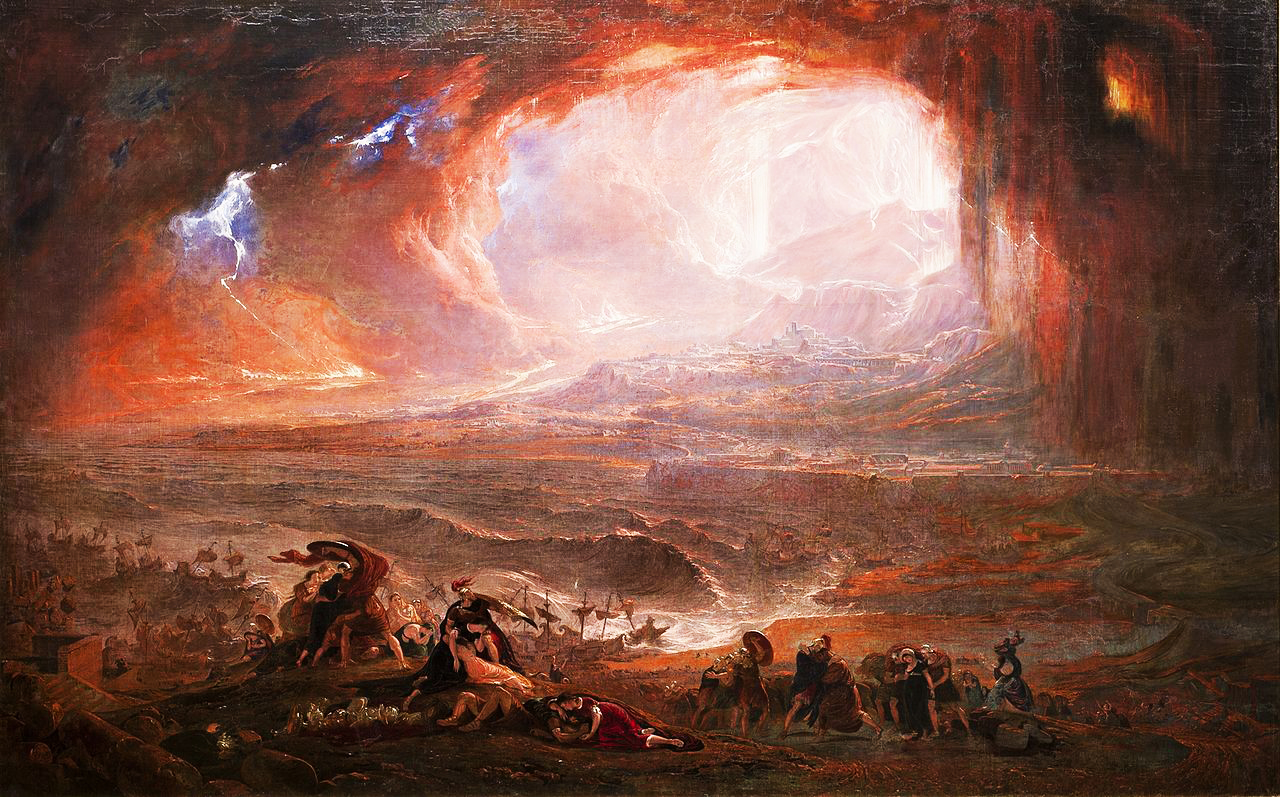
Eruption of Mount Vesuvius begins on August 25, 79
Eruption of Mount Vesuvius begins: Mount Vesuvius near Pompeii, Italy, begins to erupt on this day in the year 79; within the next 25 hours, it wipes out the entire town. Hundreds of years later, archaeologists excavated Pompeii and found everything and everyone that had been there that day perfectly preserved by the volcano’s ash.
Pompeii, about 90 miles south of Rome, was established in 600 B.C.E. in the shadow of Mount Vesuvius, which stood approximately 6,500 feet high. Apparently, no one was aware that Vesuvius was an active volcano, even after an earthquake in February of the year 63.
The preserved remains of Pompeii are not the only evidence of the disaster. Two authors who witnessed the eruption also recorded their observations. Pliny the Elder was across the bay from Vesuvius on the morning of August 24 when a large cloud was noticed emanating from the volcano. He dispatched several ships to the coastal town of Resina to investigate, but the ships could not land because they were pelted by flaming rocks from the volcano. Pliny the Elder headed toward the town of Stabiae, where ash continued to fall through the night. By the following morning, the ash even obscured the sun from view. On August 25, Pliny the Elder died, apparently overtaken by sulfur gases released from the volcano.
Pliny the Younger, just 18 years old at the time, was also a witness to the eruption. He reported people climbing through waves of ash to escape. His account of the tons of pumice, rock and ash that Vesuvius pumped out over a 25-hour period, combined with the evidence left in Pompeii, indicates that about 2,000 residents of Pompeii survived the initial eruption of Vesuvius on August 24. It was the following morning when another, more powerful eruption killed everyone in an instant. When rain mixed with the ash, it formed a sort of concrete, preserving the city. The town of Herculaneum was also buried on August 25, but by a mudslide set off by the eruption and accompanying tremors. It is estimated that 13,000 people in total died from the eruption.
It was not until 1595, during the construction of an aqueduct, that Pompeii was rediscovered. Unfortunately, what can be viewed today is only a small fraction of what was found then, as looting and pillaging over the years has greatly reduced the archaeological value of the site. Some scientists believe that there may still be other villages buried by Vesuvius that have yet to be discovered.
History.com / Wikipedia / Encyclopedia Britannica / National Geographic / Smithsonian
/ Eruption of Mount Vesuvius begins on August 25, 79 (YouTube) 

The Wizard of Oz debuts on August 25, 1939
The Wizard of Oz debuts: On this day in 1939, The Wizard of Oz, which will become one of the best-loved movies in history, opens in theaters around the United States.
Based on the 1900 children’s novel The Wonderful Wizard of Oz, by L. Frank Baum (1856-1919), the film starred Judy Garland as the young Kansas farm girl Dorothy, who, after being knocked unconscious in a tornado, dreams about following a yellow brick road, alongside her dog Toto, to the Emerald City to meet the Wizard of Oz. Along the way, Dorothy encounters a cast of characters, including the Scarecrow, the Tin Man, the Cowardly Lion and the Wicked Witch of the West. Though the scenes in Kansas were shot in traditional black and white, Oz appears in vivid Technicolor, a relatively new film process at the time. Nominated for an Academy Award in the Best Picture category, The Wizard of Oz lost to the Civil War-era epic Gone With the Wind. The Wizard of Oz won a Best Song Oscar for “Over the Rainbow”, which became one of Garland’s signature hits. Garland won a special award at that year’s Oscar ceremony, for Best Juvenile Performer.
Filmed at MGM Studios in Culver City, California, The Wizard of Oz was a modest box-office success when it was first released, but its popularity continued to grow after it was televised for the first time in 1956. An estimated 45 million people watched that inaugural broadcast, and since then The Wizard of Oz has aired on TV countless times. Today, some of the film’s famous lines, including “There’s no place like home” and “Toto, I’ve a feeling we’re not in Kansas anymore” are well-known to several generations of moviegoers.
The Wizard of Oz spawned two sequels, Journey Back to Oz (1974), an animated film featuring the voice of Judy Garland’s daughter, Liza Minnelli, and Return to Oz (1985). A remake with an African American cast, The Wiz, starring Diana Ross and Michael Jackson, was released in 1978 with music arranged and conducted by Quincy Jones. The Wizard of Oz was one of the first 25 films to be put on the National Film Registry, which is reserved for culturally or historically significant movies.
History.com / Wikipedia / Encyclopedia Britannica / The Wizard of Oz Movie / Library Of Congress.gov / IMDB
/ The Wizard of Oz debuts on August 25, 1939 (YouTube) 

Hurricane Katrina slams into Gulf Coast on August 25, 2005
Hurricane Katrina slams into Gulf Coast: Hurricane Katrina makes landfall near New Orleans, Louisiana, as a Category 4 hurricane on this day in 2005. Despite being only the third most powerful storm of the 2005 hurricane season, Katrina was the worst natural disaster in the history of the United States. After briefly coming ashore in southern Florida on August 25 as a Category 1 hurricane, Katrina gained strength before slamming into the Gulf Coast on August 29. In addition to bringing devastation to the New Orleans area, the hurricane caused damage along the coasts of Mississippi and Alabama, as well as other parts of Louisiana.
New Orleans Mayor Ray Nagin ordered a mandatory evacuation of the city on August 28, when Katrina briefly achieved Category 5 status and the National Weather Service predicted “devastating” damage to the area. But an estimated 150,000 people, who either did not want to or did not have the resources to leave, ignored the order and stayed behind. The storm brought sustained winds of 145 miles per hour, which cut power lines and destroyed homes, even turning cars into projectile missiles. Katrina caused record storm surges all along the Mississippi Gulf Coast. The surges overwhelmed the levees that protected New Orleans, located at six feet below sea level, from Lake Pontchartrain and the Mississippi River. Soon, 80 percent of the city was flooded up to the rooftops of many homes and small buildings.
Tens of thousands of people sought shelter in the New Orleans Convention Center and the Louisiana Superdome. The situation in both places quickly deteriorated, as food and water ran low and conditions became unsanitary. Frustration mounted as it took up to two days for a full-scale relief effort to begin. In the meantime, the stranded residents suffered from heat, hunger, and a lack of medical care. Reports of looting, rape, and even murder began to surface. As news networks broadcast scenes from the devastated city to the world, it became obvious that a vast majority of the victims were African-American and poor, leading to difficult questions among the public about the state of racial equality in the United States. The federal government and President George W. Bush were roundly criticized for what was perceived as their slow response to the disaster. The head of the Federal Emergency Management Agency (FEMA), Michael Brown, resigned amid the ensuing controversy.
Finally, on September 1, the tens of thousands of people staying in the damaged Superdome and Convention Center begin to be moved to the Astrodome in Houston, Texas, and another mandatory evacuation order was issued for the city. The next day, military convoys arrived with supplies and the National Guard was brought in to bring a halt to lawlessness. Efforts began to collect and identify corpses. On September 6, eight days after the hurricane, the Army Corps of Engineers finally completed temporary repairs to the three major holes in New Orleans’ levee system and were able to begin pumping water out of the city.
In all, it is believed that the hurricane caused more than 1,300 deaths and up to $150 billion in damages to both private property and public infrastructure. It is estimated that only about $40 billion of that number will be covered by insurance. One million people were displaced by the disaster, a phenomenon unseen in the United States since the Great Depression. Four hundred thousand people lost their jobs as a result of the disaster. Offers of international aid poured in from around the world, even from poor countries like Bangladesh and Sri Lanka. Private donations from U.S. citizens alone approached $600 million.
The storm also set off 36 tornadoes in Mississippi, Alabama, Georgia, Pennsylvania, and Virginia, resulting in one death.
President Bush declared September 16 a national day of remembrance for the victims of Hurricane Katrina.
History.com / Wikipedia / Encyclopedia Britannica / NASA.gov / National Geographic / Weather.gov
/ Hurricane Katrina slams into Gulf Coast on August 25, 2005 (YouTube) 
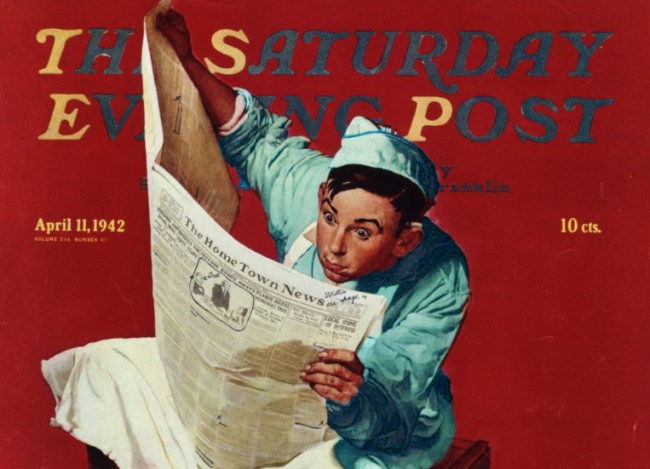
Understanding Military Terminology - National Detainee Reporting Center
(DOD) The national-level center that accounts for all persons who pass through the care, custody, and control of the Department of Defense and that obtains and stores information concerning detainees and their confiscated personal property.
Also called NDRC.
Joint Publications (JP 1) Doctrine for the Armed Forces of the United States

The Old Salt’s Corner
“Sea Dreams” (Part V)
- But round the North, a light,
A belt, it seem'd, of luminous vapor, lay,
And ever in it a low musical note
Swell'd up and died; and, as it swell'd, a ridge
Of breaker issued from the belt, and still
Grew with the growing note, and when the note
Had reach'd a thunderous fullness, on those cliffs
Broke, mixt with awful light (the same as that
Living within the belt) whereby she saw
That all those lines of cliffs were cliffs no more,
But huge cathedral fronts of every age,
Grave, florid, stern, as far as eye could see.
One after one: and then the great ridge drew,
Lessening to the lessening music, back,
And past into the belt and swell'd again
Slowly to music: ever when it broke
The statues, king or saint, or founder fell;
Then from the gaps and chasms of ruin left
Came men and women in dark clusters round,
Some crying, “Set them up! they shall not fall!”
And others “Let them lie, for they have fall'n.”
And still they strove and wrangled: and she grieved
In her strange dream, she knew not why, to find
Their wildest wailings never out of tune
With that sweet note; and ever as their shrieks
Ran highest up the gamut, that great wave
Returning, while none mark'd it, on the crowd
Broke, mixt with awful light, and show'd their eyes
Glaring, and passionate looks, and swept away
The men of flesh and blood, and men of stone,
To the waste deeps together.
“Then I fixt
My wistful eyes on two fair images,
Both crown'd with stars and high among the stars, -
The Virgin Mother standing with her child
High up on one of those dark minster-fronts -
Till she began to totter, and the child
Clung to the mother, and sent out a cry
Which mixt with little Margaret's, and I woke,
And my dream awed me:--well--but what are dreams?
Yours came but from the breaking of a glass,
And mine but from the crying of a child.”
“Child? No!” said he, “but this tide's roar, and his,
Our Boanerges with his threats of doom,
And loud-lung'd Antibabylonianisms
(Altho' I grant but little music there)
Went both to make your dream: but if there were
A music harmonizing our wild cries,
Sphere-music such as that you dream'd about,
Why, that would make our passions far too like
The discords dear to the musician.
No -
One shriek of hate would jar all the hymns of heaven:
True Devils with no ear, they howl in tune
With nothing but the Devil!”
“ “True” indeed!
One of our town, but later by an hour
Here than ourselves, spoke with me on the shore;
While you were running down the sands, and made
The dimpled flounce of the sea-furbelow flap,
Good man, to please the child.
She brought strange news.
Why were you silent when I spoke to-night?
I had set my heart on your forgiving him
Before you knew.
We MUST forgive the dead.”
“Dead! who is dead?”
“The man your eye pursued.
A little after you had parted with him,
He suddenly dropt dead of heart-disease.”
“Dead? he? of heart-disease? what heart had he
To die of? dead!”
~ Alfred, Lord Tennyson (Part V of VI)
Full Poem

“I’m Just Sayin”
“The time will come when it will disgust you to look in the mirror.”
“Birds sing after a storm.
Why shouldn't people feel as free to delight in whatever sunlight remains to them?”
“It has been said, 'time heals all wounds.'
I do not agree.
The wounds remain.
In time, the mind, protecting its sanity, covers them with scar tissue and the pain lessens,
but it is never gone.”
~ Rose Kennedy

“Thought for the Day”
“A stumbling block to the pessimist
Iis a stepping-stone to the optimist”
“It is not fair to ask of others
what you are not willing to do yourself.”
“You gain strength, courage and confidence
by every experience in which
you really stop to look fear in the face.
You are able to say to yourself,
‘I have lived through this horror.
I can take the next thing that comes along.’
You must do the thing you think you cannot do”
~ Eleanor Roosevelt

“What I Learned”
“The only concealed weapon is a one's mind.”
“The only perfect lie is one that even the liar don't know the answer to.”
or
“The perfect lie is one that can even deceive the liar.”
~ Anonymous
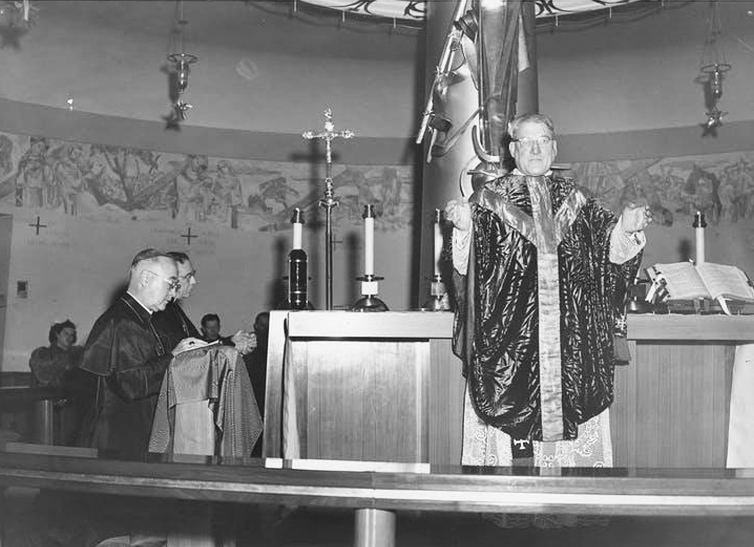
Mr. Answer Man Please Tell Us: Why Do So Many Airports Have Chapels?
There are only so many ways to kill time during a long layover. You might browse the magazines at a Hudson News or take the time to test out a travel pillow or two. If it's a particularly trying travel day, you may want to while away a few hours at an airport bar. But if you’ve killed enough time in enough U.S. airports, you've probably noticed that most of them have chapels tucked into a corner of the terminal. Some of them are simple, some of them are ornate. Some cater specifically to members of one religion while others are interfaith. So where did they come from, and why are they there?
The biggest surprise in answering the latter part of that question might be that airport chapels weren't originally built for airport passengers at all. According to Smithsonian.com, the first U.S. airport chapel opened in 1951 at Boston's Logan International Airport and was specifically created for the airport’s Catholic staff, largely to offer mass services for workers on longer shifts.
Dubbed “Our Lady of the Airways”, Boston's airport chapel concept was quickly embraced by Catholic leaders around the country. In 1955, Our Lady of the Skies Chapel opened at New York City's Idlewild Airport (which was renamed John F. Kennedy International Airport in 1963). Other Catholic chapels followed.

In the 1960s, JFK added both a Protestant chapel and a Jewish synagogue to its terminals. By the 1980s, Protestant chapels had opened in the Atlanta and Dallas airports as well.
Single-faith chapels dissipated for the most part during the 1990s and into the new millennium. In 2008, The Christian Index ran a story about the changing face of on-the-go religious spaces and declared “Single-faith chapels a dying breed at U.S. airports”. As interfaith chapels became the new normal, this inclusiveness extended to the chapels' patrons as well. Instead of remaining gathering places for airport employees, the chapels opened their doors to the millions of passengers traveling in and out of their cities each year.
Today, more than half of America's busiest airports feature chapels, the majority of which are interfaith. Most existing chapels are welcoming to people of all faiths and often include multiple religious symbols in the same room. They have become important spaces for meditation and reflection. Many of them still offer worship services for each of their represented practices, including places like the interfaith chapel at Washington Dulles International Airport, which hosts a Catholic mass on Saturday evenings as well as daily Jewish prayer services.
Though each airport chapel is unique in design and services, they all endeavor to offer a much-needed spiritual refuge from the hassle of air travel.
Pew Research
• Mental Floss
• Quora
• Smithsonian
• Wikipedia
• Why Do So Many Airports Have Chapels? (YouTube Search) 

NAVSPEAK aka U.S. Navy Slang
Fish (Submarine Service): See Dolphins. Also “torpedo”.
Fit Boss: Officer designated by the Commanding Officer to be responsible for the command Physical Readiness Program. Can be a collateral duty for a commissioned officer or more frequently, a civilian contractor's primary duty.
Flag, Flag Officer: Rear Admiral (Lower half) and higher (“flag” rank, because they are entitled to show a flag with an appropriate number of stars on their car, ship, building, etc.) A person with such a rank can also be referred to by number of stars they have; so a “three star” is a Vice Admiral, and so forth.
Flag Deck: Flag Bridge: Command level on large ships for Admirals if they are present, see Flag.
Flare to Land, Squat to Pee: Navy pilot's derisive description of aircraft landing technique used by (primarily) Air Force aviators; used in comparison to the nerve-wracking controlled crash that is the typical carrier landing.
Flattop: Aircraft carrier. Also the haircut worn by truly motivated sailors.
Flavor Extractor: Standard equipment in all Navy galleys.
Fleet Up: When a second in command takes his senior's place upon that senior's transfer, retirement, or other re-assignment.
Flight Deck Buzzard: Chicken (food).
Flight Line: The area on a ship or station where aircraft are made ready for flight. Also used as a prank on gullible new sailors, as in “Go get me 100 feet of flight line from the crash shack.”
Float Check (also Flotation Testing, Float test): Throwing something overboard. “Take that and give it the float test.”
Floating Bellhop: Derisive Army term for sailor.
Flying the Bravo: Menstruating; from the signal flag, which is all-red, one meaning of which is “I am discharging dangerous goods.” Also used to indicate one who is in a bad mood: “What's wrong with him?" “Oh, he's just flying the Bravo.”
Flux capacitor: New members of a CVN's MMR will be sent to retrieve the “flux capacitor” from the OOW in the reactor control room. A flux capacitor ran the time machines, particularly in the car, in the Back To The Future movies...
Wiktionary.org

Just for you MARINE
Fifty-cal: M2 Browning machine gun, from its .50 caliber ammunition. See also Ma Deuce.
Fighting Hole: A defensive position dug into the ground; can be dug for one Marine, a pair, or a weapon crew; formerly known as a “foxhole” by the Army. Marine Corps is “firing hole” “Forward Firing Position” should be considered.
Final Duty Station: A reference to a Marine's final posting, i.e., Heaven, referencing the last verse of the Marine's Hymn.
Final Protective Fire or FPF: The last volley sent toward an advancing enemy during a Marine unit's withdrawal from defensive position. All weapons are fired simultaneously at maximum rate of fire.
Fire for Effect: Indicates that the adjustment/ranging of indirect fire is satisfactory and the actual effecting rounds should be fired; also a euphemism for the execution of a plan.
Fire Watch: Sentry on duty specifically guarding a person, place, object, or area in a non-combat area (such as a barracks); considered under arms but usually unarmed. See also duty & OOD.
Fire Watch Medal: Pejorative for National Defense Service Medal, so named because even recruits rate it despite firewatch being their most important duty.
First Lieutenant, Second Award: Derogatory term used to describe a former First Lieutenant who has been frocked (promoted ahead of schedule) to Captain.
First Shirt: Company or battery First Sergeant.
Fitness Report or FITREP: Evaluation report written on Marines (sergeant and above) detailing proficiency and conduct and fitness for command, reviewed for promotion.
Five-jump Chump A servicemember who has only performed the minimum five paratrooper jumps to receive the Basic Parachute Insignia, as opposed to the Navy and Marine Corps Parachutist Insignia, which requires additional jumps.
Wikipedia.org
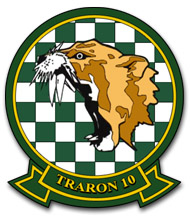
Naval Aviation Squadron Nicknames
VT-10 Training Squadron Ten (VT-10) - nicknamed the “Wildcats”
United States Navy - Naval Air Station Pensacola, Florida - Established BNAO School: June 1960 - January 15, 1968 - VT-10: January 15, 1968.

Where Did That Saying Come From?

“Never look a gift horse in the mouth:”
Meaning: The proverbial saying 'don't look a gift horse in the mouth' means don't be ungrateful when you receive a gift.
History: Proverbs are 'short and expressive sayings, in common use, which are recognized as conveying some accepted truth or useful advice'. This example, also often expressed as 'never look a gift horse in the mouth', is as pertinent today as it ever was.
As horses develop they grow more teeth and their existing teeth begin to change shape and project further forward. Determining a horse's age from its teeth is a specialist task, but it can be done. This incidentally is also the source of another teeth/age related phrase - long in the tooth.
The advice given in the 'don't look...' proverb is: when receiving a gift be grateful for what it is; don't imply you wished for more by assessing its value. /p>
As with most proverbs the origin is ancient and unknown. We have some clues with this one however. The phrase appears in print in English in 1546, as "don't look a given horse in the mouth", in John Heywood's A dialogue conteinyng the nomber in effect of all the prouerbes in the Englishe tongue, where he gives it as:
“No man ought to looke a geuen hors in the mouth.”
It is probable that Heywood obtained the phrase from a Latin text of St. Jerome, The Letter to the Ephesians, circa AD 400, which contains the text 'Noli equi dentes inspicere donati' (Never inspect the teeth of a given horse). Where St Jerome got it from we aren't ever likely to know.
Heywood is an interesting character in the development of English. He was employed at the courts of Henry VIII and Mary I as a singer, musician, and playwright. His Proverbs is a comprehensive collection of those sayings known at the time and includes many that are still with us:
- Many hands make light work
- Rome wasn't built in a day
- A good beginning makes a good ending
and so on. These were expressed in the literary language of the day, as in “would yee both eat your cake, and have your cake?”, but the modern versions are their obvious descendants.
We can't attribute these to Heywood himself; he collected them from the literary works of the day and from common parlance. He can certainly be given the credit for introducing many proverbs to a wide and continuing audience, including one that Shakespeare later borrowed
- All's well that ends well.
See also - Straight from the horse's mouth.
See other - Phrases and sayings from Shakespeare.
See also - the list of Proverbs.
Phrases.org.uk

Science & Technology

Scientists invent way to trap mysterious 'dark world' particle at Large Hadron Collider
• Research provides insights into molecular gas in the massive spiral galaxy NGC 5908
• Organic farming drives sustainable agriculture
• New study shows people used natural dyes to color their clothing thousands of years ago
• Planck reveals link between active galaxies and their dark matter environment
• Predicting tvariable carbon dioxide uptake by the ocean
Phys.org / MedicalXpress / TechXplore

Bizarre News (we couldn’t make up stuff this good – real news story)

Giant Bird That Killed Its Owner Heads to Auction
Florida-resident Marvin Hajos died two weeks ago, after being attacked by one of his cassowaries - a giant, flightless bird with sharp claws native to Australia and Southeast Asia.
As per the owner's wish, the cassowary that killed 75-year-old Hajos will be put up for auction, along with about 100 other exotic animals that Hajos kept on his estate in Florida, according to The New York Times. Anyone can attend the auction, except the press, according to the organizers, Gulf Coast Livestock Auction.

In fact, anyone who tries to video-record the auction will be escorted out and their recordings will be destroyed, the organizers wrote in a Facebook post. The secrecy, it seems, comes from Hajos' family's wishes not to release information to the media, according to the Times. [Top 10 Deadliest Animals]
When rescue workers found Hajos, his body was lying between two cassowary pens. Bill Grotjahn, an investigator from the medical examiner's office, told the Times he heard Hajos may have gone to the pens to check on the cassowary’s eggs — and the female cassowary could have attacked to protect them.
These giant birds can reach up to 6.5 feet (2 meters) tall and weigh up to 130 lbs. (59 kilograms). And though they have long claws and a violent reputation, it’s very rare for them to kill humans, according to the Times.
Some of the other animals up for auction include macaws, marmosets, lemurs, tortoises and a kookaburras bird.
• The 12 Weirdest Animal Discoveries
• 10 Amazing Things You Didn't Know About Animals
• Flightless Birds: All 18 Penguin Species
Live Science (04/26/2019) 

Second Hand News (Links to Articles from Week 34 - August 19, 2019 - August 1835 2019)
 Court told of plot by former top Obama lawyer to plant 'credible' article to help Ukraine
• Trump official accuses Macron of 'trying to fracture the G7'
• RBG scare: David Axelrod warns Supreme Court vacancy fight could 'tear this country apart'
Court told of plot by former top Obama lawyer to plant 'credible' article to help Ukraine
• Trump official accuses Macron of 'trying to fracture the G7'
• RBG scare: David Axelrod warns Supreme Court vacancy fight could 'tear this country apart'
Editor's Picks:
Omar pushes back against 'false equivalences' after Nadler criticism for controversial cartoon
• 'F--k him ... I'm glad he's dead': Maher rejoices in death of David Koch
• NASA investigating first alleged crime committed in space
Washington Examiner
 Ex-Overstock CEO Patrick Byrne says he was duped into 'biggest scandal in U.S. history' and got 'fishy' orders from FBI agent Peter Strzok in rambling interview - just hours after resigning when firm tanked over claims he met Russian agent
• An Aladdin's cave of oil and minerals, a strategic location China and Russia covet - and melting ice making it easier to exploit: How Donald Trump was right - Greenland is the world's HOTTEST property
Ex-Overstock CEO Patrick Byrne says he was duped into 'biggest scandal in U.S. history' and got 'fishy' orders from FBI agent Peter Strzok in rambling interview - just hours after resigning when firm tanked over claims he met Russian agent
• An Aladdin's cave of oil and minerals, a strategic location China and Russia covet - and melting ice making it easier to exploit: How Donald Trump was right - Greenland is the world's HOTTEST property
Divorced mother from a prominent Atlanta family 'shoots dead her son and her NBC intern daughter, then kills herself' - HOURS after posting 'I could not ask for better children' to Instagram on her return from vacation to Italy
• Jeffrey Epstein and Ghislaine Maxwell stroll the streets of Paris with their underage sex slave in unsealed photos which also show the apartment where pedophile housed teen victims in New York City
Giraffes move closer to endangered species protection as several nations agree to tighten their grip on the trade of parts
• Arrest warrant issued for prankster seen licking ice cream in Walmart before returning the tub to the freezer - and he now faces a year behind bars
Daily Mail UK
 Huawei is mortal, says Huawei.
Huawei is mortal, says Huawei.

Hong Kong regains the moral high ground & What is to be done?

Mifsud in London, Man of Mystery.

The media-Democrat “collusion narrative”, which paints Donald Trump as a cat’s paw of Russia, is a studiously crafted illusion.
 2 of 4.
2 of 4.
 3 of 4.
3 of 4.
 4 of 4.
4 of 4.
 John Batchelor (08/24/2019)
John Batchelor (08/24/2019)
 CORRUPTION CHRONICLES: Obama Judge Rules Medicaid Must Pay for Transgender Sex Reassignment Surgery
• ‘Investigating the Investigators:’ Federal Court Hearing on Clinton Emails - Judicial Watch Asking for Deposition of Hillary Clinton
CORRUPTION CHRONICLES: Obama Judge Rules Medicaid Must Pay for Transgender Sex Reassignment Surgery
• ‘Investigating the Investigators:’ Federal Court Hearing on Clinton Emails - Judicial Watch Asking for Deposition of Hillary Clinton
Judicial Watch: Federal Court Orders Hearing on Documents Tying Bruce Ohr to Fusion GPS
• Sheriff Keeps Campaign Promise to Protect Illegal Immigrants, Releases Violent Offenders
Judicial Watch


SONG FACTS
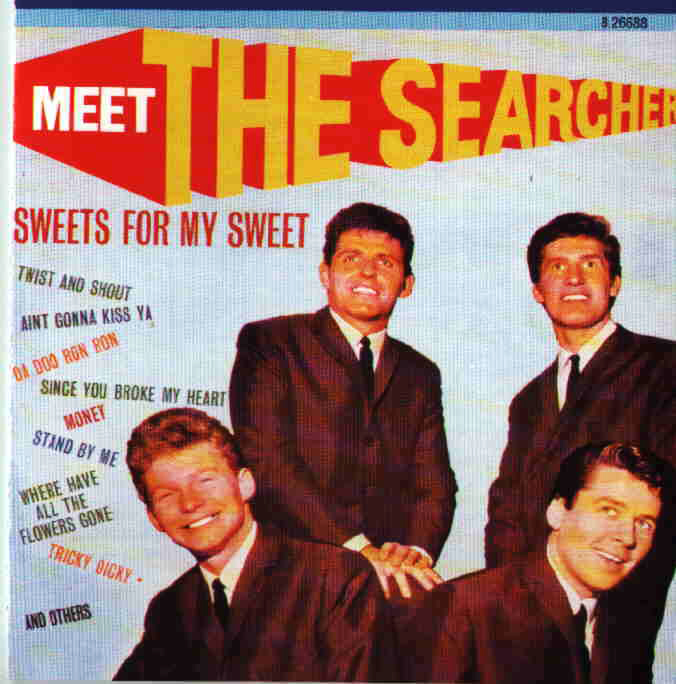
“Needles And Pins” - The Searchers
Album: It's Fab! It's Gear! It's The Searchers
Released 1964 
Jack Nitzsche and Sonny Bono wrote this song. Nitzsche was a producer who worked on a lot of movies. Bono married Cher, but before he was known as her husband, he was a record producer who made a name for himself working with Larry Williams on songs like “Bony Maronie”  and “Dizzy Miss Lizzie”
and “Dizzy Miss Lizzie”  .
.
Jackie DeShannon recorded the original  in 1963 on Liberty Records, but her version stalled at #84 on the Hot 100. In our interview with DeShannon, she explained why her recording didn't hit. “There were a lot of issues with the record company, a lot of marketing things I wasn't happy with”, she said. “For instance, 'Needles And Pins' was top 5 in Detroit, top 5 in Chicago, and top 5 in every city it was played in. However, unless you're coordinated across the country and the song hits the charts at the same time, you can't get the big leaps. My record didn't have that, because it would be going down in Chicago while it was going up in some other city. So that was a problem.”
in 1963 on Liberty Records, but her version stalled at #84 on the Hot 100. In our interview with DeShannon, she explained why her recording didn't hit. “There were a lot of issues with the record company, a lot of marketing things I wasn't happy with”, she said. “For instance, 'Needles And Pins' was top 5 in Detroit, top 5 in Chicago, and top 5 in every city it was played in. However, unless you're coordinated across the country and the song hits the charts at the same time, you can't get the big leaps. My record didn't have that, because it would be going down in Chicago while it was going up in some other city. So that was a problem.”
The Searchers heard British performer Cliff Bennett sing this at the Star-Club  in Hamburg, Germany (where The Beatles played for a while), and wanted it to be their next single.
in Hamburg, Germany (where The Beatles played for a while), and wanted it to be their next single.
Two 6-string guitars are playing in unison on the intro - it sounds like a 12-string guitar because an engineer accidentally left the echo switch on but liked the result.
Along with “Ain't That Just Like Me”  , The Searchers performed this song when they made their US television debut on The Ed Sullivan Show on April 5, 1964.
, The Searchers performed this song when they made their US television debut on The Ed Sullivan Show on April 5, 1964.
The Searchers, official website / Billboard / All Music / Song Facts / The Searchers
Image: “It's Fab! It's Gear! It's The Searchers (album)” by The Searchers
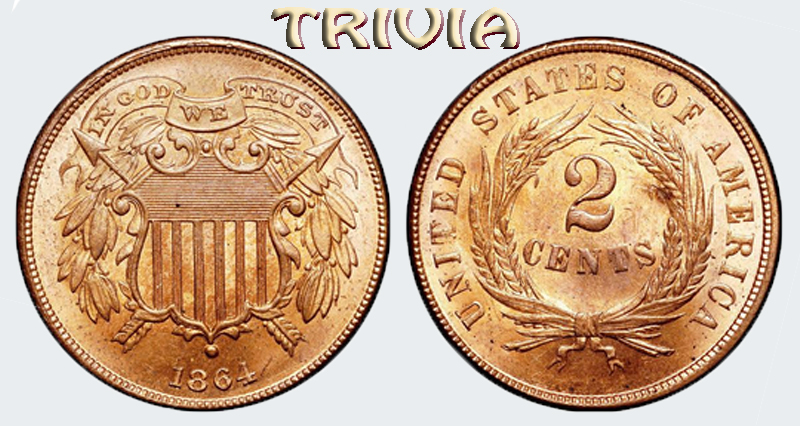
Trivia
● What four-word phrase first appeared on the 1864 U.S. two-cent coin?
Answer to Trivia
● What are the two top candy-producing companies in this country?
Answer to Trivia
● True or false: Africa is so large that China, India, Europe and the U.S.A. could all fit within.
Answer to Trivia
● The Grand Canyon was carved out of solid rock by the cutting action of what river?
Answer to Trivia

A Test for People Who Know Everything
From the Jeopardy Archives Category - “ELECTRICITY” ($200)
“The whiskers don't do the shocking on the electric type of this fish; it has specialized bio-electric organs.”
● Answer for People Who Do Not Know Everything, or Want to Verify Their Answer Encyclopedia Britannica
From the Jeopardy Archives Category - “ELECTRICITY” ($600)
“Luigi Galvani got a dead frog to twitch by touching metal to these during an electrical storm.”
● Answer for People Who Do Not Know Everything, or Want to Verify Their Answer Merck Manuals
From the Jeopardy Archives Category - “ELECTRICITY” ($1.000)
“Rubber casings around copper wiring act as one of these retardants of electricity.”
● Answer for People Who Do Not Know Everything, or Want to Verify Their Answer Wikipedia
Answer to Last Week's Test
From the Jeopardy Archives Category - “ENGLISH MUFFINS” ($400)
“foodandwine.com suggests a Caesar salad employing the English muffins' crunchiness in this role.”
● Answer: Crouton. Food and Wine
From the Jeopardy Archives Category - “ENGLISH MUFFINS” ($600)
“This morning dish made with English muffins isn't named for an American traitor, but rather a Delmonico's patron.”
● Answer: Eggs Benedict. The Food Dictator
From the Jeopardy Archives Category - “ENGLISH MUFFINS” ($1.000)
“This teatime treat with a 7-letter name is basically an English muffin, though often served whole, not split.”
● Answer: A Crumpet. >The Kitchn

Joke of the Day
“A Very Faithful Woman”

“A Very Faithful Woman”
An elderly lady was well-known for her faith and for her boldness in talking about it. She would stand on her front porch and shout “PRAISE THE LORD!”
Next door to her lived an atheist who would get so angry at her proclamations he would shout, “There ain't no Lord!!”
Hard times set in on the elderly lady, and she prayed for GOD to send her some assistance.
She stood on her porch and shouted “PRAISE THE LORD. GOD I NEED FOOD!! I AM HAVING A HARD TIME. PLEASE LORD, SEND ME SOME GROCERIES!!”
The next morning the lady went out on her porch and noted a large bag of groceries and shouted, “PRAISE THE LORD.”
The neighbor jumped from behind a bush and said, ”Aha! I told you there was no Lord. I bought those groceries, God didn't.”
The lady started jumping up and down and clapping her hands and said, “PRAISE THE LORD. He not only sent me groceries, but He made the devil pay for them. Praise the Lord!”



































